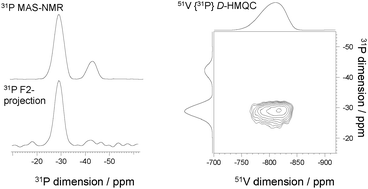We show in this article how the spatial proximity between phosphorus and quadrupolar nuclei can be efficiently and easily investigated with the D-HMQC (Dipolar Hetero-nuclear Multiple-Quantum Coherences) NMR technique. Compared to the commonly used CP-HETCOR (Cross-Polarisation HETero-nuclear CORrelation) sequence, the D-HMQC pulse scheme exhibits a higher sensitivity and a better robustness with respect to spinning frequency, electronic shielding and quadrupole interaction, and thus does not require time-consuming and complicated optimisation procedures. The advantages of the D-HMQC are demonstrated in this article through the acquisition of 31P/S through-space two-dimensional correlation NMR spectra providing unreported structural information on (i) a sodium alumino-silicate glass doped with only 3% of P2O5, (ii) a potassium boro-phosphate glass containing BO3 and BO4 groups and (iii) a crystalline zirconium vanado-phosphate. All these systems, representative of the most important mixed phosphate network materials, cannot be correctly investigated with the conventional CP-HETCOR NMR technique.

You have access to this article
 Please wait while we load your content...
Something went wrong. Try again?
Please wait while we load your content...
Something went wrong. Try again?


 Please wait while we load your content...
Please wait while we load your content...